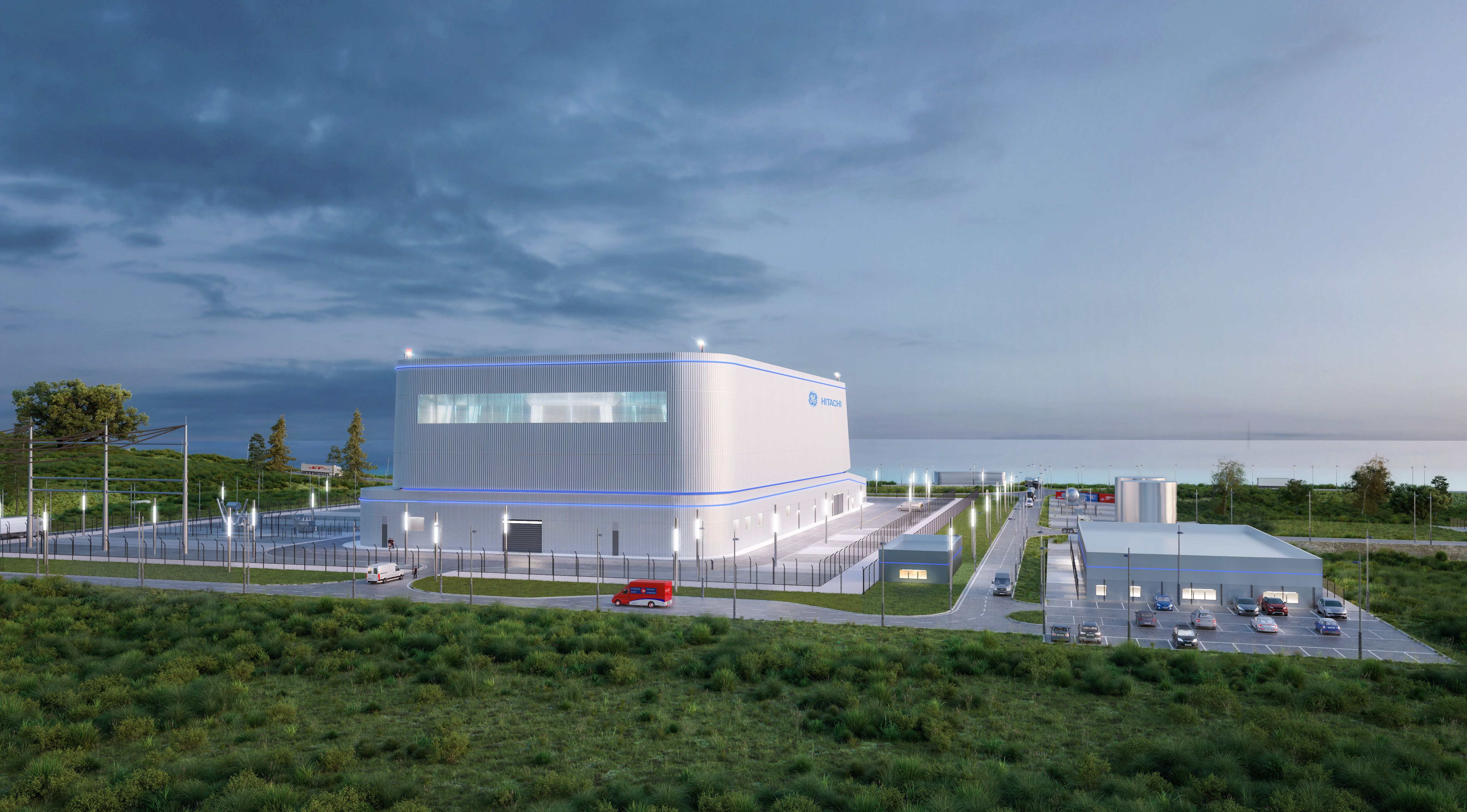GE Hitachi Nuclear Energy Signs MoU to Support BWRX-300 SMR Deployment in UK
Earlier this year, GE Hitachi Nuclear Energy (GEH) received a £33.6 million Future Nuclear Enabling Fund grant from the U.K. Department for Energy Security and Net Zero.
GEH signed multiple memorandums of understanding (MoUs) with Aecon, AtkinsRéalis, Jacobs, and Laing O’Rourke to advance potential BWRX-300 deployment in the United Kingdom. Currently, the BWRX-300 technology is progressing through Great British Nuclear’s small modular reactor (SMR) selection competition.
“Strategic relationships like these lay further foundations for the successful roll-out of our BWRX-300 technology in the UK,” said Andy Champ, GEH U.K. Country Leader. “These MoUs underscore our desire to work closely with the U.K. nuclear supply chain as the SMR competition progresses, which can play a key role in helping Britain become a clean energy hub. Given our BWRX-300 reactor is planned for deployment in Canada, collaborating with experts across the industry puts us in an even stronger position to reliably deliver this. It also furthers our confidence in our ability to work with Great British Nuclear to bring our SMR technology to market.”
Aecon is providing construction services, including project management, construction planning, and execution for Ontario Power Generation’s (OPG) Darlington New Nuclear Project; AtkinsRéalis is the architect and engineer for OPG’s project. Darlington construction is scheduled for 2025 with commercial operation starting by year-end 2029. The MoUs allow GEH to leverage project experience to progress SMR deployment in the United Kingdom.
Rendering of BWRX-300 facility design; Image Credits: GE Vernova

“Aecon’s nuclear experience and technical knowledge spans five decades and we are positioned to play a role in building the next generation of nuclear infrastructure to ensure clean, reliable, and affordable electricity for future generations,” said Thomas Clochard, EVP, Nuclear & Civil, Aecon Group. “Aecon is advancing the energy transition, including nuclear power, as the Canadian constructor of North America’s first grid-scale SMR – building a GEH BWRX-300 SMR and delivering two ongoing nuclear refurbishment projects in North America.”
GEH’s collaboration with Jacobs will facilitate design capabilities specified to the U.K. environment, while Laing O’Rourke will support program development through modern construction methods. These agreements build on a partnership with Sheffield Forgemasters to utilize the company’s forgings for BWRX-300 deployment. GEH is building a U.K. supply chain for the BWRX-300 SMR, holding an SMR supply chain conference in Sheffield earlier this year.
In January 2024, GEH received a £33.6 million Future Nuclear Enabling Fund grant from the U.K. Department for Energy Security and Net Zero. In addition, GEH entered the Generic Design Assessment process for the BWRX-300. GEH’s SMR uses a combination of existing fuel, plant simplifications, proven components, and a design based on a Nuclear Regulatory Commission-certified reactor.
GE Nuclear News
In April 2024, GEH began forming a consortium of supply chain companies to accelerate the deployment of its BWRX-300 SMR. The first company to join GEH’s group is BWXT Canada, specializing in the design, manufacture, and service of commercial nuclear components. To be eligible for selection to the group, a supplier must meet pre-defined criteria, customer requirements, and display a willingness to invest in BWRX-300 supply chain capabilities.
In February, Global Nuclear Fuel (GNF), a business under GE Vernova, received approval from the NRC to manufacture, ship, and analyze the performance of nuclear fuel enriched with uranium-235 by up to 8 WT%. The NRC issued a Certificate of Compliance, which allows GNF to ship nuclear fuel bundles with the company’s RAJ-II shipping container. It also approved licensing topical reports for advanced nuclear methods that allow GNF to analyze fuel with enrichments greater than 5 WT%.

.png&w=3840&q=75)

.png&w=3840&q=75)



.png&w=3840&q=75)



.png&w=3840&q=75)









